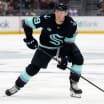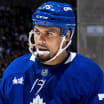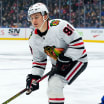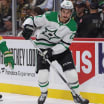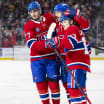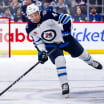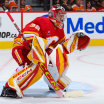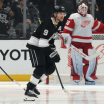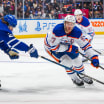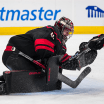Legendary hockey reporter and analyst Stan Fischler writes a weekly scrapbook for NHL.com. Fischler, known as "The Hockey Maven," will share his humor and insight with readers each Wednesday.
This week's edition features interviews with Hockey Hall of Famer Frank Boucher. Stan worked as assistant publicist with the New York Rangers during the 1954-55 season, Boucher's last as their general manager, and saved many of the stories Boucher told him. They convened again for lunch (and more tales) at a Manhattan restaurant in 1968 and again in 1973, when Frank was promoting his autobiography, "When the Rangers Were Young."
Here are some of Boucher's best stories, as told to Stan.
Voices from the Past: Frank Boucher
Hall of Famer discusses winning Cup as player, coach with pre-World War II Rangers
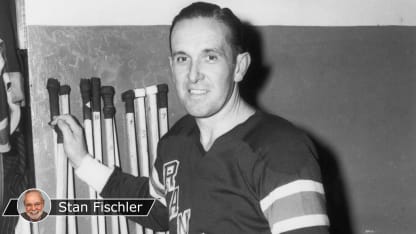
By
Stan Fischler
Special to NHL.com
You won the Lady Byng Trophy seven times. Did you ever get to actually meet Lady Byng?
I did but I was a kid at the time, growing up in Ottawa. Close to where we kids played was a neighborhood of prominent people and, since we were poor, we'd canvass these influential folks for money so we could buy equipment to play hockey. We often made a stop at Governor General Baron Byng's mansion, The baron and his wife, Lady Byng, loved hockey and liked us kids. She gave standing orders that she be told when I arrived. She asked her gardener to give me flowers to take home. She'd watch our games and when we passed a hat she'd contribute and that helped pay for our hockey equipment.
Your first NHL club was your home team, the Ottawa Senators, in 1921-22. What was it like being a big-leaguer at the age of 20?
Attitudes toward the game were very different then. The NHL was very young and there were no such things as agents or a players' union. Someone once asked me if I got a "bonus" for signing my first NHL contract, and I had to laugh. Not on your life. When the Senators asked me to play for them in 1921, I signed a one-year contract for $1,200 and considered myself lucky to be playing hockey. Even after I won the Lady Byng Trophy seven times, I never made more than $8,500 in one season.
Before signing with Ottawa, you were a detective in the Royal North-West Mounted Police. What made you quit the Mounties for pro hockey?
When I was posted to Lethbridge, Alberta, I organized a Mounties hockey team -- a Senior level club. A year later I was posted to Banff and put together another Mounties team. By this time I realized I wanted to play hockey more than being a cop, even though I always had a great respect for the Mounties. Meanwhile, my hockey skills improved and while I still was in Banff, pro people began contacting me. Apparently, they had seen something about my game they liked.
Which offer did you get that you couldn't refuse?
I got two NHL calls that were very tempting; one from the Montreal] Canadiens and the second from Ottawa. My decision was to go with my home team, but first I had to legally leave the Mounties. It cost me $50 to get out of the force, and then I signed to play 24 games. The problem in those days was that guys would be on the ice playing 60-minute games and my "luck" was that I backed up my idol,
[Frank Nighbor
, who could play without substitution. I wound up freezing my behind on the bench more than I ever wanted.
How did you get out of that situation in Ottawa?
Frank Patrick owned the Vancouver Maroons of the Pacific Coast League and wanted me to come out there because Western teams had first dibs on players who were skating in Alberta, as I had been. Frank let me finish my year with the Senators, and then I signed with Vancouver. What a difference that made! Instead of making me a sub, the way I was in Ottawa, Patrick let me have all the ice time I wanted, and I made the most of it.
How did you wind up being an original member of the New York Rangers?
Early in the 1920s it became hard for Western teams to make money. The big hockey money moved to the East after Boston entered the NHL in 1924. One by one Western teams began selling players to Eastern teams. After my fourth year with Vancouver, Frank Patrick sold me to the Bruins, but, as it happened, I never played for Boston. The Rangers were entering the NHL in 1926, with Conn Smythe first doing New York's recruiting. One of the players he signed was the great right wing
Bill Cook
, who had played against me when he was with Saskatoon. It was Bill who told Smythe to sign me. So for $15,000, which went to the Bruins, I became an original Ranger.
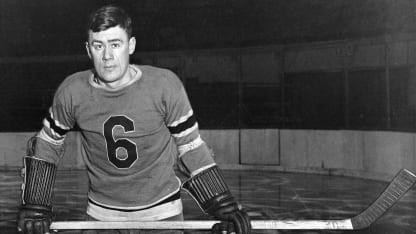
© B Bennett/Getty Images
What was that first Rangers team like in 1926-27?
Smythe had stocked our roster with good players. In addition to Bill Cook, he got
Bun Cook
, Billy's brother, plus a couple of solid defensemen,
Ching Johnson
and
Taffy Abel
, and a wonderful ironman forward named
Murray Murdoch
. But Smythe, who was fiery, got into a feud with ownership and was fired before training camp was over. In his place, the Rangers bosses brought in Lester Patrick, Frank's brother, to run the club. That first season] wasn't easy for us because we were competing with the New York Americans, who had entered the NHL a year earlier and already had a fan base. Right from the start we had a terrific rivalry with the Americans, especially since both of us were playing out of [Madison Square
also was very good. Plus, we had
Lorne Chabot
in goal, and he proved through a long NHL career to be one of the best. Other good men included Murray Murdoch and
Paul Thompson
, both excellent second-liners. Plus we had Lester, a wonderful leader, behind the bench.
What was it like to win the Stanley Cup in the Rangers' second NHL season?
It was quite a challenge. We wound up in the Final against the tough Montreal Maroons and couldn't play any games at the Garden, which had other commitments. The entire Final -- it was best-of-5 in those days -- was played at the Montreal Forum. We lost the first game, but that was the least of our problems. The biggest was that our regular goalie, Lorne Chabot, got badly hurt in the second game and we didn't have a backup -- so Lester, who once had been a great defenseman, went into the net. He was 45 years old and never had been a regular goalie, but that didn't stop him from putting on the pads.
How well did Lester play?
He had a 1-0 shutout with less than two minutes left in the third period, but Montreal scored and we went to overtime. They couldn't crack Lester even in overtime, which was unforgettable enough. And I was thrilled, scoring the game-winner in sudden death with just over seven minutes gone. Lester then made a deal getting
Joe Miller
to be our goalie for the rest of the series. Joe had been with the Americans and was nicknamed "Red Light" because he wasn't supposed to be so good. We were on the ropes when the Maroons beat us in the third game, but then Joe got a 1-0 shutout win on my goal in Game 4. "Red Light" stayed good in the rubber game, never giving up a goal until late in the third period. By then I had scored twice, and we won 2-1 to take the Cup home to New York.
Why was your second New York Cup win in 1933 so special?
Our goalie,
Andy Aitkenhead
, was a rookie but he wound up with [a 1.60] goals-against average in the playoffs, plus a pair of shutouts. Then there was a revenge thing because we faced Toronto in the Final after the Leafs had defeated us in three straight to win the championship the previous year. It also was memorable for me since this was the last Cup that Billy and Bun Cook won with me at center. Right from the get-go, our line set the pace in the opening game. Bunny got the first goal with assists from Bill and me, and we wound up taking the game 5-1. Our Cup-winning game, Game 4 in the series, was 0-0 into overtime; then Bill Cook got the Cup-winner.
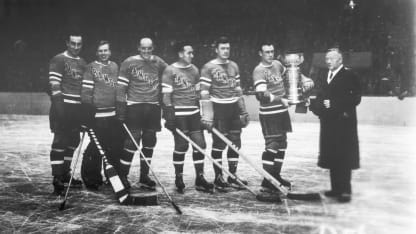
© B Bennett/Getty Images
When did you decide it would be a good idea to retire?
By the 1937-38 season I'd finally had it. My buddies from our original team, Bun and Bill, already had retired along, as had Ching Johnson and Murray Murdoch. I only played a handful of games and called it quits as the last of the Rangers originals. I had a dozen years with New York, led the team in scoring five seasons and was a three-time NHL] All-Star. I had complete satisfaction with my playing career because I was able to do many difficult things passably well against the best talent available. And I did it within the structure of the rules. I was always a stickler when it came to playing the game fairly.
**What made you turn to coaching?**
I had studied the game enough and felt I still had something to contribute. I was overjoyed during the summer of 1938 when Lester invited me to coach the New York Rovers, the Rangers farm team in the Eastern Amateur Hockey League. We had a fine young team, beating everyone in sight, and in July 1939 Lester named me coach of the Rangers. He would still be [general] manager -- and my assistant. I couldn't have been happier to sign an NHL coaching contract for $4,500.
**Could you have guessed how well you'd do as a rookie NHL coach?**
It's an old story that a coach is only as good as his players, and Lester presented me with one of the greatest teams in history. My first line had
[Lynn Patrick
, Lester's son, on left wing with
Bryan Hextall
on the right side and
Phil Watson
at center. But the second unit, starring the Colville brothers,
Neil
at center and
Mac
on the right, plus
Alex Shibicky
on the other side, was just as good. Even my third line --
Clint Smith
,
Kilby MacDonald
and
Alf Pike
-- would match up with the League's best.
Dave Kerr
was the top goalie in the League that season, and the defense wasn't bad either. We had two Hall of Famers,
Babe Pratt
and
Art Coulter
, as well as Lester's other son,
Muzz Patrick
, and
Ott Heller
. We were at a disadvantage in the six-game Final against Toronto since we only could play two games in New York. But it didn't matter; Hextall scored the
overtime winner in Game 6
and we had another Cup for New York!


